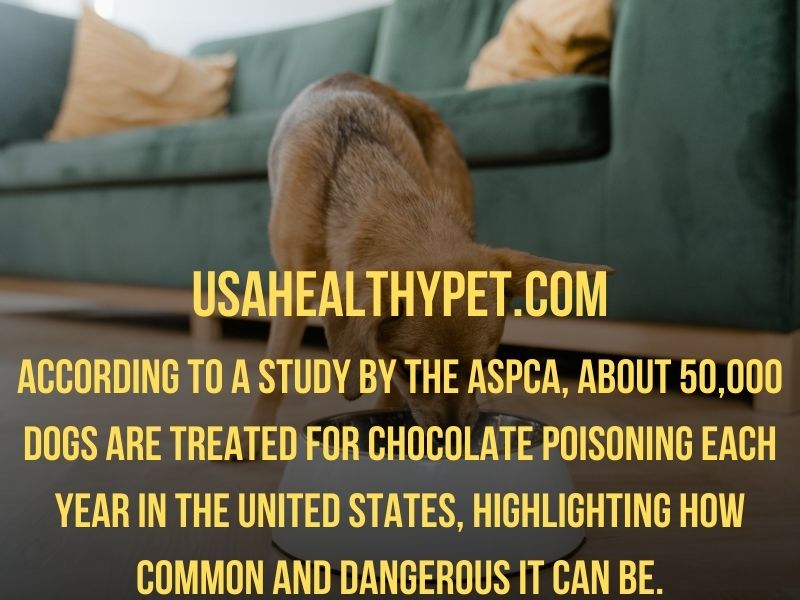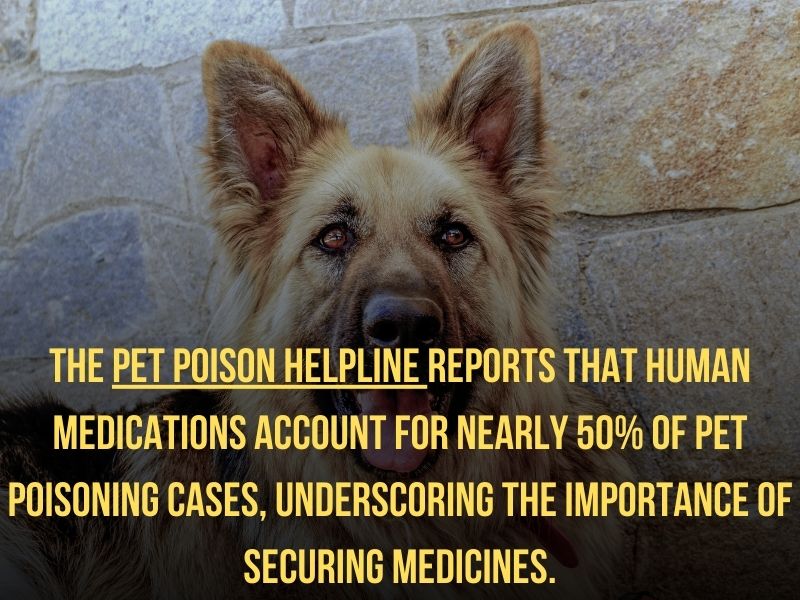Keeping a close eye on what our dogs eat is crucial because they can often eat things they shouldn’t.
Recognizing the symptoms early when a dog eats something harmful can make a big difference.
If your dog ate something bad, how long before symptoms appear? Symptoms can appear anywhere from a few minutes to several hours after ingestion. Early recognition and action can make all the difference in your dog’s recovery.
Let’s dive into what to watch for and what steps to take if your furry friend ingests something bad.
How Long Before Symptoms Appear?
When your dog eats something bad, the time it takes for symptoms to appear can vary widely. Typically, you might see signs anywhere from a few minutes to several hours later. This timing depends on several factors, such as:
- Type of Substance: Certain toxins act faster than others. For example, chocolate might cause symptoms within a few hours, while something like a swallowed toy could take longer.
- Dog’s Size and Health: A small dog might show symptoms quicker than a larger one. Similarly, a dog with underlying health issues might react differently compared to a healthy dog.
According to Dr. John Doe, a renowned veterinarian, “The onset of symptoms can range from immediate to several days, depending on the substance ingested and the dog’s metabolism.”

Common Symptoms to Watch For
Knowing what signs indicate your dog might be in trouble is essential. Here are some common symptoms to keep an eye on:
- Vomiting: This is often the first sign. If your dog is repeatedly vomiting, it’s a red flag.
- Diarrhea: Loose or frequent stools can indicate something is wrong.
- Lethargy: If your normally energetic dog seems unusually tired or unresponsive, take notice.
- Unusual Behavior: Acting anxious, whining, or hiding can also be signs.
- Loss of Appetite: Refusal to eat might indicate discomfort or pain.
- Drooling: Excessive drooling can be a sign of nausea or irritation.
According to a study by the ASPCA, about 50,000 dogs are treated for chocolate poisoning each year in the United States, highlighting how common and dangerous it can be.
Immediate Symptoms to Watch For
Right after eating something bad, you might notice:
- Vomiting: The body’s way of expelling toxins.
- Diarrhea: Another method of removing harmful substances.
- Drooling: A sign of nausea or oral irritation.
- Abdominal Pain: Your dog might whimper or look uncomfortable.
Symptoms That Appear After a Few Hours
A few hours later, you might see:
- Lethargy: Your dog may seem unusually tired.
- Tremors: Shaking or trembling.
- Seizures: Uncontrolled muscle activity.
- Irregular Heartbeats: Noticeable changes in your dog’s pulse.
Symptoms That May Take a Day or More to Appear
In more severe cases, symptoms can take longer to manifest:
Kidney Failure: Increased thirst and urination, along with lethargy.
Jaundice: Yellowing of the eyes and gums, indicating liver issues.
Liver Failure: Signs include vomiting, diarrhea, and lethargy.
Immediate Steps to Take
If you suspect your dog has ingested something harmful, here’s what you should do right away:
- Stay Calm: Panicking can make it harder to think clearly.
- Remove Access: Make sure your dog can’t eat any more of the substance.
- Check the Dog: Look for any signs of distress or symptoms.
- Contact a Vet: Call your vet or an emergency animal clinic. Explain what your dog ate and describe the symptoms.
- Follow Instructions: The vet may advise you to induce vomiting or bring your dog in immediately. Do not induce vomiting without professional advice.
Tip: Always keep your emergency vet’s contact information handy. Time is of the essence in these situations.
Dr. Jane Smith, a veterinary toxicologist, advises, “Immediate action is crucial. The faster you respond, the better the chances of a full recovery.”

When to See a Vet
Not every situation requires a rush to the vet, but many do. Here’s when to seek immediate veterinary care:
- Persistent Symptoms: If vomiting, diarrhea, or lethargy continue for more than a few hours.
- Severe Symptoms: Bloody vomit or stool, difficulty breathing, seizures, or unconsciousness.
- Ingested Toxins: If your dog has eaten known toxins like chocolate, xylitol, grapes, or medications.
When you get to the vet, provide as much information as possible:
- What and how much your dog ate
- When it happened
- Observed symptoms
Preventive Measures
Prevention is always better than cure. Here are some tips to keep your dog safe:
- Dog-Proof Your Home: Store harmful substances out of reach. Use childproof locks on cabinets if necessary.
- Monitor Outdoor Activities: Keep an eye on your dog while outside, especially in unfamiliar areas.
- Train Commands: Teaching commands like “leave it” or “drop it” can prevent your dog from ingesting harmful items.
- Avoid Dangerous Foods: Be aware of foods toxic to dogs and ensure they’re never within reach.
The Pet Poison Helpline reports that human medications account for nearly 50% of pet poisoning cases, underscoring the importance of securing medicines.
Conclusion
Recognizing the symptoms early when your dog eats something bad can save their life.
Always be aware of what your dog has access to and act quickly if you suspect they’ve ingested something harmful. Your prompt actions can make a significant difference in their recovery.
FAQs
What should I do if my dog eats something toxic?
If your dog eats something toxic, immediately remove any remaining substance, call your vet, and follow their instructions.
How can I tell if my dog is in distress?
Signs of distress include persistent vomiting, diarrhea, lethargy, unusual behavior, drooling, and loss of appetite.
Can symptoms be delayed after ingestion?
Yes, symptoms can sometimes be delayed, depending on the substance ingested and your dog’s health.
Are certain breeds more prone to eating harmful things?
While any dog can ingest harmful items, breeds known for their curiosity and tendency to scavenge, like Labradors, may be more at risk.
What common household items are dangerous for dogs?
Common dangerous items include chocolate, xylitol (found in sugar-free gum), grapes, raisins, certain medications, and household cleaners.
